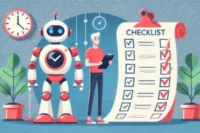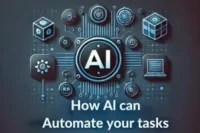Common Myths About AI Tools – Debunking the Lies
Published: 01 Jan 2025
“AI is taking over the world!” You’ve probably heard this statement before. Many people believe that artificial intelligence will soon replace humans, control industries, or even surpass human intelligence. But how much of this is true?
AI tools are transforming industries—from healthcare and finance to marketing and education. They automate repetitive tasks, improve efficiency, and assist humans in making better decisions. However, myths and misconceptions about AI prevent many people from using these tools effectively.
In this article, we’ll debunk some of the common myths about AI tools and separate fact from fiction. Understanding the reality behind these myths will help individuals and businesses make the most of AI without fear or confusion.
1. Understanding AI Myths vs. Reality
Why Do AI Myths Grow?
AI has been a topic of fascination for decades, but much of what people believe about it comes from science fiction, media hype, and misinformation. Here’s why AI myths continue to spread:
- Lack of Knowledge – Many people don’t fully understand how AI works, leading to unrealistic assumptions.
- Media Influence – Headlines often exaggerate AI’s capabilities, making it seem more powerful or dangerous than it actually is.
- Sci-Fi Movies & Pop Culture – Films like Terminator and Ex Machina paint AI as either an unstoppable force or a threat to humanity, creating fear and misconceptions.
How AI Myths Impact Businesses, Students, and Professionals
These myths can have real-world consequences, affecting how people and organizations adopt AI tools:
- Businesses: Companies may avoid AI due to fear of job losses or high costs, missing out on automation benefits.
- Students: Many believe AI will replace creative fields, discouraging them from learning AI-related skills.
- Professionals: Employees might resist AI adoption, thinking it will make their jobs obsolete rather than enhance productivity.
Understanding these myths is the first step toward embracing AI tools effectively. In the next sections, we’ll debunk the biggest misconceptions and uncover the truth about AI’s role in our world.
2. Most Popular Myths About AI Tools (Debunked!)

2.1 Myth 1: AI Will Replace All Human Jobs
Reality: AI automates specific tasks but doesn’t replace human creativity and decision-making.
Example: In customer support, chatbots handle routine inquiries, allowing human agents to focus on complex issues. This collaboration enhances efficiency without eliminating jobs.
2.2 Myth 2: AI Tools Are 100% Accurate and Unbiased
Reality: AI models learn from data, which can have biases.
Example: AI-powered hiring tools have shown bias due to past hiring data. For instance, if a company’s historical hiring favored a particular demographic, the AI might unintentionally perpetuate that bias.
2.3 Myth 3: AI Thinks Like Humans
Reality: AI follows algorithms and patterns—it doesn’t “think” or have emotions.
Example: ChatGPT generates responses based on data, not emotions. While it can simulate human-like conversations, it doesn’t possess consciousness or feelings.
2.4 Myth 4: AI Can Learn and Improve on Its Own
Reality: AI needs human intervention for training and updates.
Example: AI models like GPT require constant updates and refinements. Without human oversight, AI can produce outdated or incorrect information.
2.5 Myth 5: AI Tools Are Only for Big Companies
Reality: Many free and affordable ai tools exist for small businesses and individuals.
Example: Canva’s AI design assistant and ChatGPT for content creation are accessible to everyone, regardless of company size.
3. Interesting Facts About AI That Might Surprise You
3.1 AI Isn’t New—it Dates Back to the 1950s
While AI is often seen as a modern innovation, its roots trace back to the 1950s. Pioneers like Alan Turing laid the groundwork for machine learning and artificial intelligence, setting the stage for today’s advancements.
3.2 AI Is Already Part of Daily Life
AI seamlessly integrates into our daily routines:
- Google Search: Utilizes AI algorithms to deliver relevant search results.
- Netflix Recommendations: Employs AI to suggest shows and movies based on viewing history.
- Siri: Apple’s virtual assistant uses AI to understand and respond to user commands.
These applications demonstrate AI’s pervasive role in enhancing user experiences.
3.3 AI Doesn’t Have Emotions but Can Mimic Human-like Conversations
AI systems like ChatGPT generate responses based on data patterns, not emotions. While they can simulate human-like conversations, they lack consciousness and feelings. This distinction is crucial for understanding AI’s capabilities and limitations.
Certainly! Here’s an expert-level section addressing common misconceptions about AI tools and their realities:
4. Common Misconceptions About AI and Their Realities
4.1 AI Is Too Complex
Reality: Many AI tools are designed to be user-friendly, requiring no technical expertise. Platforms like Canva’s AI design assistant and ChatGPT for content creation are accessible to everyone, regardless of technical skill.
Overcoming the Myth: Explore beginner-friendly AI tools to experience their simplicity firsthand. This hands-on approach can demystify AI and encourage its adoption.
4.2 AI Tools Require Coding Skills
Reality: No-code AI platforms enable users to build and deploy AI models without writing a single line of code. These platforms democratize AI, making it accessible to non-technical users.
Overcoming the Myth: Engage with no-code AI platforms to understand their capabilities. This can empower individuals to leverage AI in various applications without the need for coding skills.
4.3 AI Is Always Expensive
Reality: There are numerous free and affordable AI tools available. For instance, Grammarly offers a free version for grammar checking, and ChatGPT provides free access to its language model.
Overcoming the Myth: Take advantage of free ai tools to experience their benefits without financial commitment. This can help individuals and businesses understand the value AI brings without significant investment
5. Common AI Tools and Their Real-World Applications
5.1 Chatbots for Customer Support and Content Creation
- ChatGPT: Developed by OpenAI, this tool assists in writing emails, and articles, and providing customer support.
- Bard: Google’s AI chatbot that helps in gathering information, creating content, and offering interactive assistance.
Real-World Use: Businesses integrate these chatbots into their websites and customer service platforms to answer questions, provide information, and engage with customers.
5.2 Image Generation Tools for Designers
- MidJourney: An AI tool that creates images based on written descriptions, aiding designers in visualizing concepts and producing creative content.
- DALL·E: Developed by OpenAI, this tool generates images from textual prompts, assisting designers in creating unique visual content.
Real-World Use: Designers use these tools to quickly produce visual content, explore creative ideas, and generate materials for marketing, social media posts, and more.
5.3 AI-Powered Analytics Tools
- Google Analytics: A web analytics service that provides insights into website traffic, user behavior, and marketing effectiveness.
- ChatGPT for Excel: An integration that allows users to perform complex data analysis and generate reports using natural language commands within Excel.
Real-World Use: Businesses utilize these ai analytics tools to make data-driven decisions, optimize marketing strategies, and enhance customer experiences.
Frequently Asked Questions (FAQs)
A prevalent misconception is that AI will completely replace human jobs. In reality, AI is designed to augment human capabilities, enhancing productivity and efficiency across various industries.
Concerns about AI often stem from fears of job displacement, loss of control, and potential misuse. These apprehensions are fuelled by misconceptions and a lack of understanding about AI’s actual capabilities and limitations.
AI systems operate by processing large amounts of data through algorithms to identify patterns and make decisions. Machine learning, a subset of AI, enables systems to learn from data and improve over time without explicit programming.
While AI can perform specific tasks with high efficiency, it lacks human qualities such as consciousness, emotions, and ethical reasoning. AI is a tool that complements human intelligence rather than replacing it.
Conclusion
Debunking common myths about AI tools is crucial to harnessing their full potential. AI is designed to assist and augment human intelligence, not replace it. By exploring AI tools with an open mind, individuals and businesses can unlock new opportunities and efficiencies.
We’d love to hear your thoughts! What’s the most surprising AI fact you’ve learnt? Share your insights in the comments below.

- Be Respectful
- Stay Relevant
- Stay Positive
- True Feedback
- Encourage Discussion
- Avoid Spamming
- No Fake News
- Don't Copy-Paste
- No Personal Attacks

- Be Respectful
- Stay Relevant
- Stay Positive
- True Feedback
- Encourage Discussion
- Avoid Spamming
- No Fake News
- Don't Copy-Paste
- No Personal Attacks





